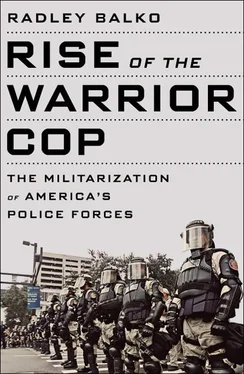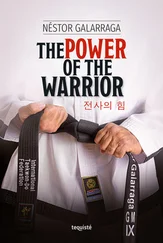Despite consistent data showing that drug use and addiction were abating, Bennett’s Drug Strategy report of 1989 declared drugs to be a “deepening crisis” that presented “the gravest threat to our national well-being.” Bennett’s appointment and subsequent hard line instigated a new round of drug war hysteria from other public officials. Sen. Phil Gram, Republican of Texas, and Republican Georgia representative Newt Gingrich introduced a bill to convert unused army centers into mass detention centers for drug offenders. Republican representative Richard Ray of Georgia proposed that drug offenders be exiled to Midway and Wake Islands. With no distractions, Ray argued, it would be easier for them to rehabilitate. Ray’s proposal even passed the House Armed Services Committee. He said that when he proposed the idea to a conference of sheriffs and police chiefs, he received a standing ovation. FBI director William Sessions declared that the country would need to “strike a new balance between order and individual liberties.” Joint Chiefs of Staff chairman Adm. William Crowe went further, stating that with the new antidrug offensive, “you’re probably going to have to infringe on some human rights.” In testimony before Congress, Darryl Gates proclaimed that casual drug use was “treason,” then recommended that users be “taken out and shot.” It was an especially odd comment given that Gates’s own son had a history of problems with drug abuse. 36On several occasions in the 1980s, the House and Senate also flirted with extending the death penalty to convicted drug dealers.
In terms of actual policy, Bush and Bennett proposed huge increases in funding to build new prisons. Their plan proposed three times more funding for law enforcement than for treatment, and shifted much of the enforcement emphasis from smugglers and dealers to casual users. The plan nudged states to raise penalties on users, to seize their cars, and to send them to military-like “boot camps” for rehabilitation, regardless of whether or not they were actually addicted.
As part of the 1988 crime bill, Congress also created a new set of federal grants called “Byrne grants” through the Justice Department’s Justice Assistants Grants (JAG) program. 37Over the next twenty-five years, Byrne grants would send billions of federal dollars to police departments across the country to fight crime in what amounted to a larger, better-funded, more ingeniously planned, and thus more successful attempt at what Nixon tried to do with the LEAA.
The Byrne grant program gave the White House another way to impose its crime policy on local law enforcement. As local police departments were infused with federal cash, members of Congress got press release fodder for bringing federal money back to the police departments in their districts. No one gave much thought to the potential unintended consequences of such a program because there was no reason to—for everyone who mattered, the program was a winner. The program’s losers would become apparent in the 1990s.
The careless mixing of cops and soldiers continued too. In 1989 President Bush created yet more regional “joint task forces” to further coordinate between the military and law enforcement agencies across the country—but again, only for drug policing. One of the few voices of sanity in the Reagan years was Secretary of Defense Caspar Weinberger, who spoke out against his own boss’s attempt to enlist the military in drug policing. Bush’s secretary of Defense, Dick Cheney, had no such reservations. He’d write in a DoD publication a few years later, “The detection and countering of the production, trafficking, and use of illegal drugs is a high priority national security mission at the Department of Defense.” 38
Democrats in Congress savaged Bennett and Bush’s drug plan— for not going far enough . Senate Judiciary Committee chairman Joe Biden told the Associated Press that, “quite frankly,” the Bush-Bennett plan “is not tough enough, bold enough, or imaginative enough to meet the crisis at hand.” 39Representative Larry Smith of Florida lamented the lack of more funding to hire more drug warriors. “This is a war that is being fought without very many troops,” he said. 40The most pointed criticism came from Representative Charlie Rangel of New York. A March 1989 profile of Rangel in Ebony magazine ran under the headline, “Charles Rangel: The Front-Line General in the War on Drugs.” Rangel told the magazine: “All these people are talking about protecting the world against communism and the Soviets…. How dare they let this happen to our children and not scream with indignation!” It isn’t clear just whom Rangel was criticizing. Just about everyone running for office had been screaming with indignation for ten years. Yet Rangel called the federal drug war “lackadaisical” and “indifferent” and said that it suffered from “a lack of commitment.” He damned methadone treatment as “a crime” and snapped that anyone who even mentioned legalization was committing “moral suicide.” 41
By the late 1980s, the policies, rhetoric, and mind-set of the Reagan-Bush all-out antidrug blitzkrieg had fully set in at police departments across the country. Nearly every city with a population of 100,000 or more either had a SWAT team or was well on its way to getting one. The tactics that ten years earlier had been reserved for the rare, violent hostage-taking or bank robbery were by now employed daily by large police departments from coast to coast. “I wonder where the United States is heading,” Federal District Court judge Richard Matsch, a Nixon appointee, told USA Today in 1989. “My concern is that the real victim in the war on drugs might be the United States Constitution.” Another federal judge, Reagan appointee John Conway, worried that “police practices of this nature raise the grim specter of a totalitarian state.” 42The free market economist Milton Friedman, who had worked in both the Nixon and Reagan administrations, was so concerned that he wrote an open letter to Bennett in the Wall Street Journal:
This plea comes from the bottom of my heart. Every friend of freedom, and I know you are one, must be as revolted as I am by the prospect of turning the United States into an armed camp, by the vision of jails filled with casual drug users and of an army of enforcers empowered to invade the liberty of citizens on slight evidence. A country in which shooting down unidentified planes “on suspicion” can be seriously considered as a drug-war tactic is not the kind of United States that either you or I want to hand on to future generations. 43
The public appeared to side with Bennett. In a September 1989 poll conducted by the Washington Post and ABC News, 62 percent of the country said that they would “be willing to give up a few of the freedoms we have in this country if it meant we could greatly reduce the amount of illegal drug use.” Another 52 percent agreed that police should be allowed “to search without a court order the houses of people suspected of selling drugs, even if houses of people like you are sometimes searched by mistake.” 44
In Boston, police cracked down with “Terry” searches—the “stop-and-frisk” searches that were borne of Terry v. Ohio —of any suspected drug offenders “who cause fear in the community,” a broad enough justification to let them search anyone at will. Suffolk Superior Court judge Cortland Mathers described the new policy as, “in effect, a proclamation of martial law in Roxbury for a narrow class of people, young blacks.” A Boston Globe article in September 1989 described how what was essentially an occupation of some neighborhoods was degrading an entire generation’s opinion of police. One woman who worked with preteens at a city community center told the paper that the children “have a negative sense of a police officer. They see the television version of a police officer, who is knocking down doors for the bad guys, then they see their friends, innocent people, getting stopped and searched. They see innocent people getting harmed by police for no reason. When I talk to 9- and 10-year-olds, they think all police are bad.” A thirteen-year-old girl at the center told the Globe reporter, “Some officers let guns and badges go to their heads. They want respect, but if they don’t give respect, they don’t get respect. Like when they jumped to the conclusion to shoot that 30-year-old man.” (She was referring to an incident in which a Boston police officer shot Rolando Carr during a stop-and-frisk. Carr was unarmed.) An eight-year-old added, “Sometimes, they should look more into the situation before they do anything.” 45
Читать дальше












